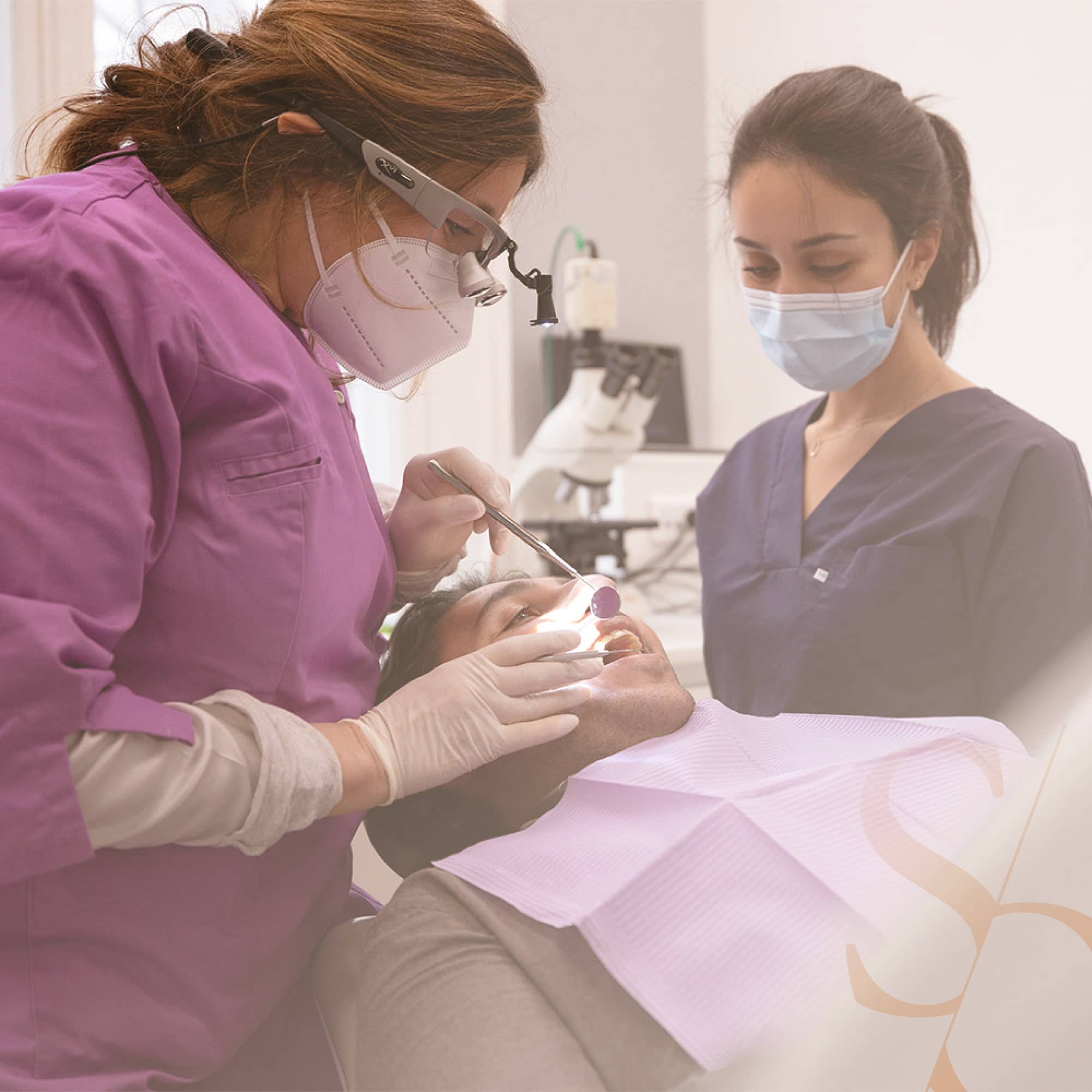Periodontal disease occurs when the tissues supporting the teeth become infected.
Gingivitis and periodontitis are the two types of periodontal disease, most of which are infectious in origin. Prompt treatment is essential, as the development of the disease leads to tooth mobility and loosening.
GINGIVITIS
Gingivitis is the first stage of periodontal disease. The gum-teeth junction is colonised by bacteria that trigger inflammation of the gums. Red, swollen and painful, the gum becomes detached from the tooth and tartar accumulates under the gum. At an advanced stage, if left untreated, gingivitis develops into periodontitis.
PARODONTITIS
In the periodontitis stage, the destruction concerns the jawbone and the supporting ligaments that anchor the teeth (dental alveolar ligament). Periodontal pockets form and bacteria accumulate there, with varying degrees of pus. Eventually, the tooth loosens and can be lost, sometimes accompanied by a very painful purulent collection.





